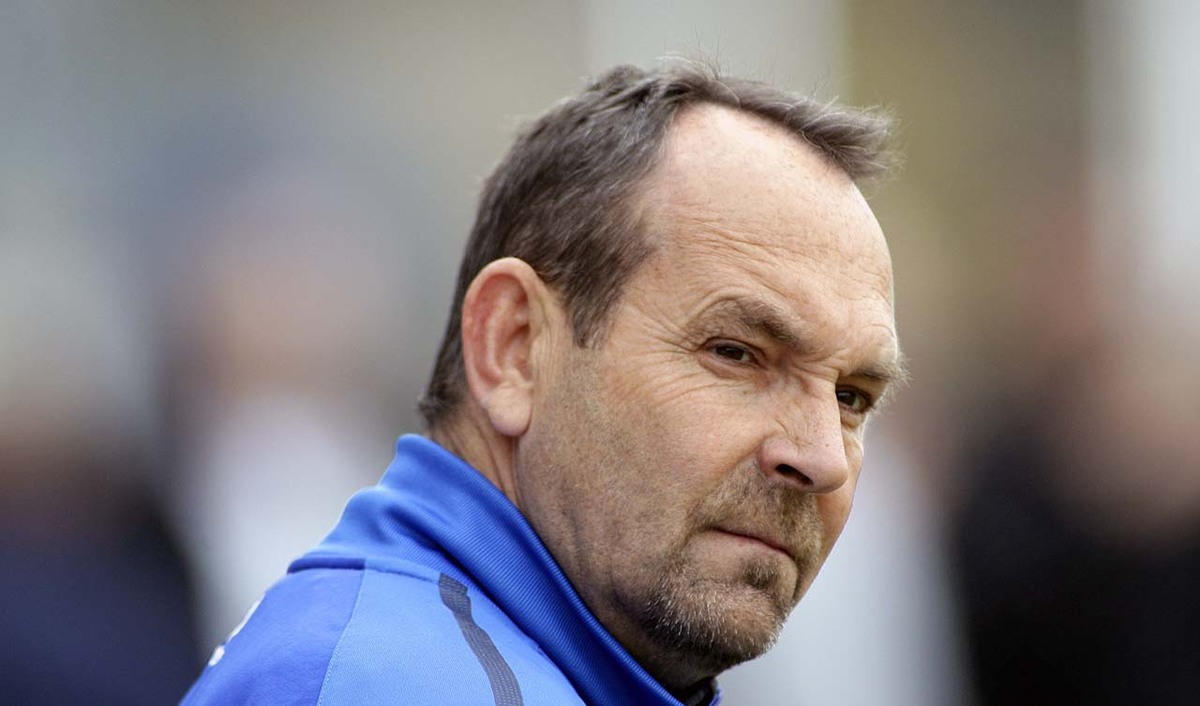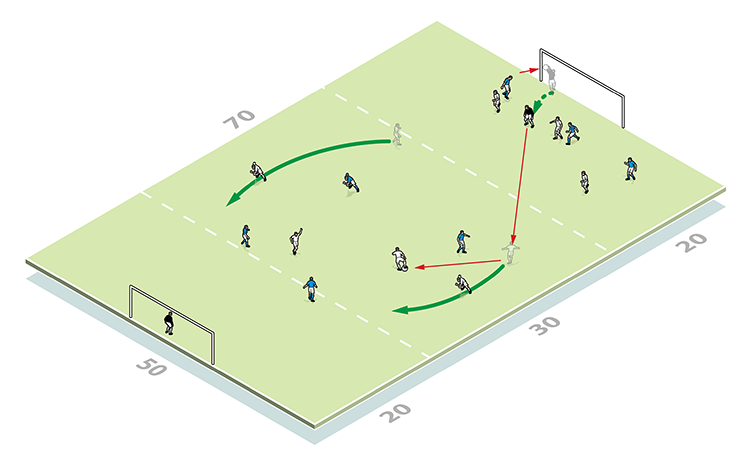Forward thinking
At any level, the ability to attack the opposition with quick, positive forward play can yield terrific rewards. This session requires determined and aggressive forward movement and clever passing, and the key is to always be moving forwards or sideways – so never backwards, and never remaining stationery. If players follow this simple blueprint, we, as a team, have the makings of fast, invasive attacks, which are so dangerous.

| Area | 40x20 yards |
| Equipment | Balls, goals |
| No. of Players | Full squad |
| Session Time | Practice 15mins, progression 10mins, game 20mins |
At any level, the ability to attack the opposition with quick, positive forward play can yield terrific rewards.
This session requires determined and aggressive forward movement and clever passing, and the key is to always be moving forwards or sideways – so never backwards, and never remaining stationery. If players follow this simple blueprint, we, as a team, have the makings of fast, invasive attacks, which are so dangerous.
The session improves inventiveness in passing. It also increases ball retention, and promotes dynamic forward running.
What do I get the players to do?
We set up three players in a 40x20-yard area, with additional players ready to come in at the top and bottom edges.
Two players start at the bottom – they always play one-touch. Player 1 feeds player 2, then runs around him and up the line. Player 2 lays to player 3, himself then making an intelligent run.
Player 3 - who is one-or two-touch - links with the advancing player 1, who then plays into the feet of player 2. A final ball to one of the two new players waiting to come into the practice completes the move (1). Players 1 and 2 leave the area while player 3 remains – he is the central cog for play coming back the other way. After a few minutes we change the central player.
1

How do I progress the session?
We progress by giving players the freedom to make their own choices in terms of running and passing angles (2), but at no point must the ball go backwards.
2

What are the key things to look for technically/tactically?
We look for fast, dynamic passing and a willingness to run into space quickly to keep the drill going. Player 3 must resist the urge to play backwards, because going forwards (or even sideways) is the blueprint for fast invasive attacks.
How do I put this into a game situation?
We play 8v8 (plus two keepers) in a 70x50-yard area, dividing the length into two outer 20-yard sections and a 30-yard central box. The two 20-yard lines act as offside lines, representing defensive, midfield and offensive areas. The game has a four-touch limit.
The keeper plays the ball into the defensive area. Because there is no backward passing in the middle area, midfielders and strikers have to be inventive when receiving, so we look for them to turn with the ball or receive on the half-turn (3a). Players must support those in possession, particularly defenders and midfielders, in getting alongside and in front of the ball (3b/3c). Balance in attack and defence remains important at all times so as to protect against counter-attacks (3d). To finish, we can enlarge to an 11v11 game.
3a

3b

3c

3d

Editor's Picks
Attacking transitions
Deep runs in the final third
Using the goalkeeper in build-up play
Intensive boxes drill with goals
Penetrating the final third
Creating and finishing
My philosophy
Pressing initiation
Compact team movement
Coaches' Testimonials

Alan Pardew

Arsène Wenger

Brendan Rodgers

Carlos Carvalhal

José Mourinho

Jürgen Klopp

Pep Guardiola

Roy Hodgson

Sir Alex Ferguson

Steven Gerrard
Coaches' Testimonials

Gerald Kearney, Downtown Las Vegas Soccer Club

Paul Butler, Florida, USA

Rick Shields, Springboro, USA

Tony Green, Pierrefonds Titans, Quebec, Canada
Join the world's leading coaches and managers and discover for yourself one of the best kept secrets in coaching. No other training tool on the planet is written or read by the calibre of names you’ll find in Elite Soccer.
In a recent survey 92% of subscribers said Elite Soccer makes them more confident, 89% said it makes them a more effective coach and 91% said it makes them more inspired.
Get Monthly Inspiration
All the latest techniques and approaches
Since 2010 Elite Soccer has given subscribers exclusive insight into the training ground practices of the world’s best coaches. Published in partnership with the League Managers Association we have unparalleled access to the leading lights in the English leagues, as well as a host of international managers.
Elite Soccer exclusively features sessions written by the coaches themselves. There are no observed sessions and no sessions “in the style of”, just first-hand advice delivered direct to you from the coach.









